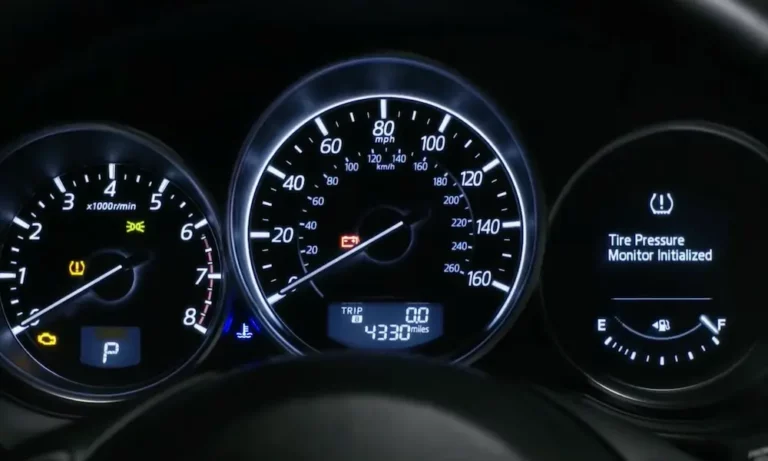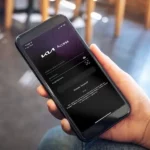Ever noticed that annoying tire pressure light on your Mazda CX-5’s dashboard and wondered how to make it disappear? You’ve come to the right place. Whether you’ve just filled your tires or swapped them for new ones, that warning light needs to go—and the reset process varies depending on which CX-5 model you drive.
The Two TPMS Systems in Mazda CX-5 Models
Before diving into reset procedures, you need to know which tire pressure monitoring system (TPMS) your CX-5 has. This depends entirely on your vehicle’s model year.
Pre-2017 Models: Indirect TPMS
If your CX-5 was manufactured before 2017, it’s equipped with an indirect TPMS system that works through your ABS wheel sensors. This system:
- Detects when one tire rotates at a different speed than others (suggesting under-inflation)
- Features a physical reset button with a tire symbol and exclamation point
- Requires manual reset after you inflate your tires
- Is less precise than newer systems but still effective
2017 and Newer Models: Direct TPMS
For 2017 and newer CX-5 owners, your vehicle uses a direct TPMS with actual pressure sensors inside each tire. This modern system:
- Measures actual tire pressure in real-time using valve stem sensors
- Has no physical reset button to press
- Resets automatically after proper inflation and driving
- Provides more accurate pressure readings
Proper Tire Pressure: The First Step to Any Reset
Before attempting any reset, make sure your tires are properly inflated:
- Find the recommended pressure on the driver’s door jamb sticker (usually between 34-36 PSI for most CX-5 models)
- Check each tire when cold using a reliable gauge
- Add air until you reach the recommended pressure
- Don’t forget to check your spare tire too
Proper inflation isn’t just about resetting that light—it’s about safety, fuel economy, and tire longevity. Under-inflated tires wear unevenly, reduce fuel efficiency, and can even lead to blowouts.
How to Reset TPMS on Pre-2017 Mazda CX-5 Models
If you drive a pre-2017 CX-5 with a physical reset button, here’s your step-by-step guide:
- Make sure all four tires are inflated to the recommended pressure
- Turn the ignition to ON position (or press the start button twice without starting the engine)
- Locate the TPMS reset button—it usually sits below the steering wheel and has a tire with an exclamation mark symbol
- Press and hold the button until the warning light blinks three times
- Release the button—the system is now calibrated to your current tire pressure
Some owners report needing to hold the button for up to 5 seconds. If the light continues flashing after release, that’s normal—it should stop after driving for a few minutes.
How to Reset TPMS on 2017 and Newer Mazda CX-5 Models
For those with 2017 or newer CX-5 models, the process is even simpler:
- Ensure all tires are properly inflated to the recommended pressure
- Start your vehicle and drive at speeds above 16 mph (25 km/h) for approximately 10 minutes
- The system will automatically recalibrate and turn off the warning light
That’s it! No buttons to press, no complex procedures to follow. The direct TPMS system needs a short drive to verify that all tire pressures are normal, after which it automatically resets itself.
After Tire Rotation or Replacement: Special Reset Procedures
When you rotate or replace tires on your CX-5, you may need to take extra steps to reset the TPMS system properly.
For Pre-2017 Models:
- After tire rotation or replacement, inflate all tires to the recommended pressure
- Follow the standard reset procedure using the TPMS button
- Drive for at least 10 minutes at speeds over 16 mph to ensure the system recalibrates
For 2017+ Models with Direct TPMS:
After new tires are installed, follow this procedure:
- Turn the ignition ON, then back to ACC or OFF
- Wait approximately 15 minutes
- Drive at speeds of at least 16 mph for 10 minutes
This allows the tire pressure sensor ID codes to register automatically in the system.
Common TPMS Issues and Troubleshooting
Sometimes the light won’t turn off despite your best efforts. Here’s what might be happening:
The Light Keeps Coming Back
If your TPMS warning light returns soon after resetting:
- Double-check your tire pressure when tires are cold
- Look for slow leaks or damaged valve stems
- Remember that pressure drops approximately 1 PSI for every 10°F decrease in temperature
The Light Flashes Before Staying On
A flashing TPMS light that then remains illuminated typically indicates a system malfunction rather than low tire pressure. This could mean:
- Sensor batteries are failing (they typically last 5-7 years)
- A sensor has been damaged
- There’s an electronic malfunction in the TPMS system
The System Won’t Reset in Cold Weather
Cold weather can significantly affect tire pressures and TPMS readings. In winter months:
- Check pressure more frequently
- Add 1-2 PSI above the recommended level when extremely cold
- Be prepared to reset more often as temperatures fluctuate
TPMS Sensor Maintenance and Lifespan
The direct TPMS sensors in 2017+ Mazda CX-5 models contain batteries that eventually wear out. Here’s what you should know:
- TPMS sensor batteries typically last 5-7 years
- Sensors must be replaced when their batteries die
- Replacement usually requires professional service
- New sensors must be programmed to your vehicle
When replacing tires on a CX-5 with direct TPMS, ensure your tire shop knows to handle the sensors carefully and reprogram them as needed.
Why Proper Tire Pressure Matters in Your CX-5
Maintaining correct tire pressure does more than just keep that warning light off:
- Improves fuel economy by up to 3%
- Extends tire life by reducing uneven wear
- Enhances handling and braking performance
- Reduces the risk of blowouts and accidents
According to the National Highway Traffic Safety Administration (NHTSA), properly inflated tires are safer, last longer, and save you money at the pump.
Seasonal Tire Pressure Fluctuations
Your Mazda CX-5’s tire pressure will naturally fluctuate with seasonal temperature changes:
| Season | Temperature Effect | Pressure Impact | Recommendation |
|---|---|---|---|
| Winter | Cold temperatures | Pressure drops | Check weekly, add 1-2 PSI extra |
| Spring | Fluctuating temps | Inconsistent readings | Monitor regularly during transition |
| Summer | Heat increases pressure | Pressure rises | Avoid over-inflation, check when cool |
| Fall | Dropping temperatures | Gradual pressure loss | Reset TPMS as weather cools |
Monthly Tire Inspection Routine
Beyond just watching for the TPMS light, develop this monthly routine:
- Check pressure in all tires, including spare, using a quality gauge
- Inspect tires for signs of wear, damage, or embedded objects
- Look at tread depth using the penny test (insert a penny with Lincoln’s head down—if you can see the top of his head, your tread is too worn)
- Evaluate alignment by looking for uneven wear patterns
This simple routine takes just minutes but can save you from expensive repairs and dangerous situations.
Understanding TPMS Limitations
While the Mazda CX-5’s TPMS is a valuable safety tool, it has limitations:
- The system typically only warns when pressure drops 25% below recommended levels
- It can’t detect sudden blowouts before they happen
- It doesn’t replace regular manual pressure checks
- Environmental factors can sometimes trigger false warnings
That’s why tire safety experts recommend checking your tire pressure manually at least once a month, regardless of warning light status.
Driving on Rough Terrain and TPMS Readings
If you take your CX-5 off-road or on particularly rough surfaces, you might notice temporary TPMS warnings. This happens because:
- Uneven surfaces can cause wheel speed variations that trigger indirect TPMS
- Driving below 9.3 mph for extended periods may prevent accurate readings
- Aggressive driving with hard steering and rapid acceleration/deceleration can affect readings
In these situations, the system may need additional driving time on normal roads to reset properly.












